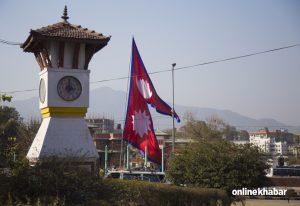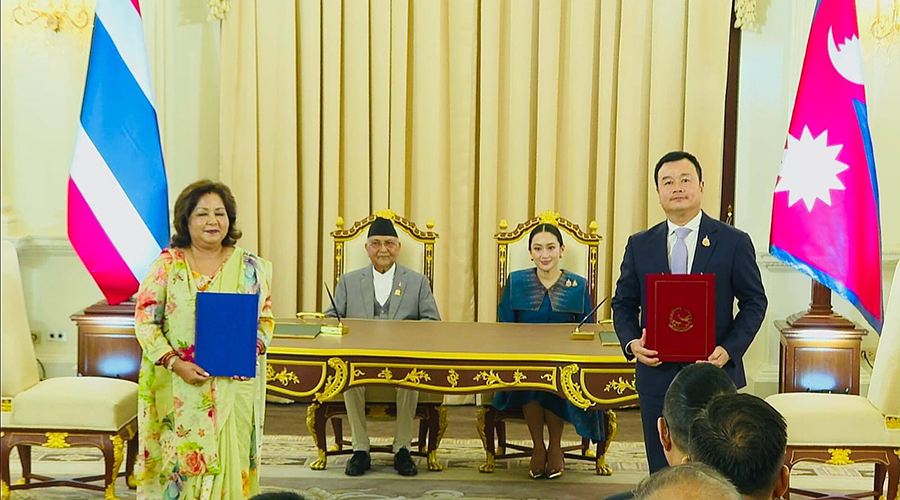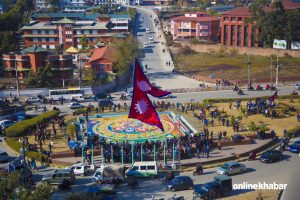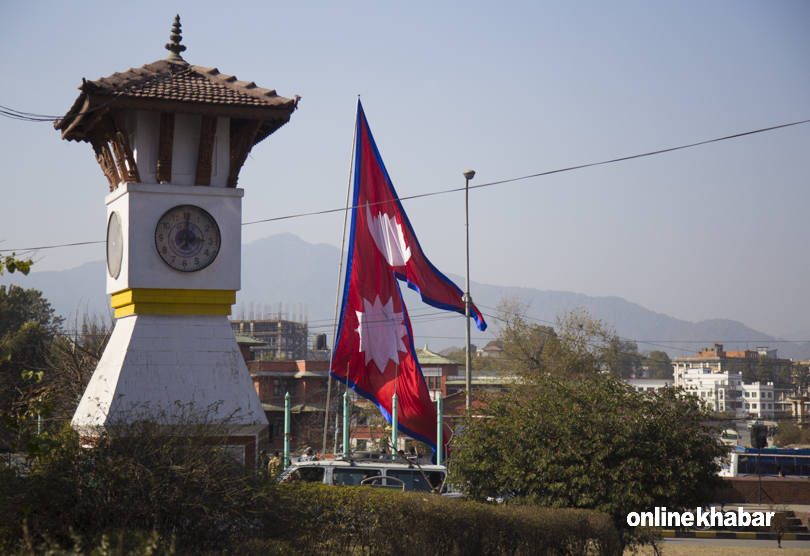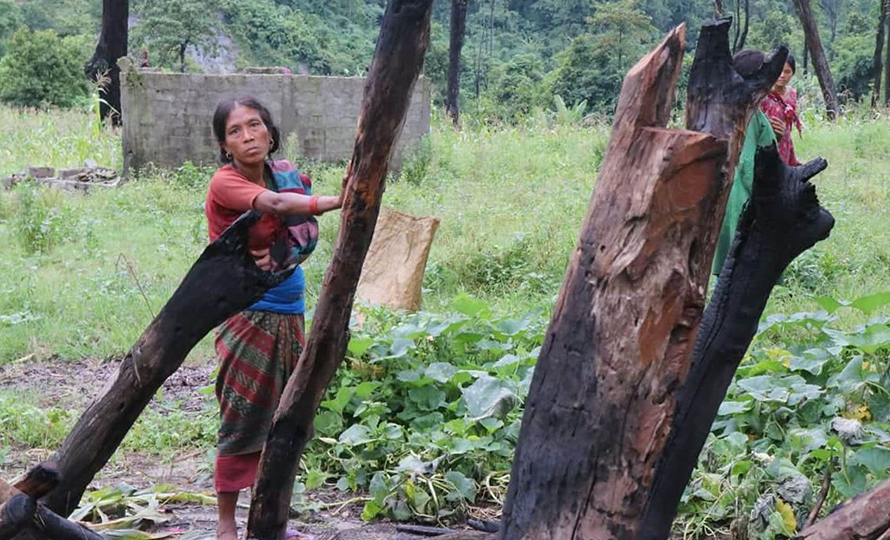
Given the richness of its biodiversity and cultural heritage, Nepal is a place where the world’s most important traditional knowledge (TK) resides. This knowledge has been passed on through generations beginning with the medicinal practice of local plants such as turmeric and aloe-vera and then to the agricultural practises with neem as natural pesticide.
For many indigenous communities, it is the foundation upon which life is based, affects their health, their livelihoods, and their way of life. However, despite its great value, the protective legal framework for the protection of Nepal’s traditional knowledge is lacking and traditional knowledge is vulnerable to exploitation and misappropriation.
Exploitation of traditional knowledge

Biopiracy, the global phenomenon of exploiting traditional knowledge and genetic resources without the consent or compensation of the indigenous communities, is now an urgent issue. Biopiracy is when big corporations or researchers, patent biological materials or knowledge created from indigenous knowledge and do not give credit to the communities that stole their knowledge.
There are thousands of examples of biopiracy from the neem tree and turmeric being patented by Western Companies even though these plants have been used for centuries in Nepal and India for medicinal uses.
In many of these cases the knowledge held by indigenous communities was extracted, commercialised and patented without acknowledgment or benefit sharing for the original knowledge holders. Significant legal debates about the protection of traditional knowledge and ethical questions surrounding Intellectual Property law have arisen from these instances.
The ‘legal’ issue of exploiting traditional knowledge for commercial purposes is also an ‘ethical’ issue. What it points out is a whacky imbalance between a wealthy corporation in a developed country and marginalised indigenous communities in a developing country, like, Nepal.
Indigenous communities willing to protect their knowledge, but that are the stewards of a wealth of biological and cultural resources, oftentimes lack legal means to do so. This results in their knowledge being taken without permission and put into making such products that yield revenue that the communities that have contributed to creating that knowledge never make a dime from.
International legal frameworks and in Nepal

Existing international legal frameworks such as the Convention on Biological Diversity (CBD) and the Nagoya Protocol acknowledge the need to protect traditional knowledge and to put in place mechanisms to condone fair and equitable benefit-sharing.
CBD (1992) Article 8(j) recognises TK for the preservation and the maintenance of TK, and the participation of indigenous and local communities in the conservation and the sustainable use of biological diversity.
While these frameworks are important international standards, however, their implementation remains inconsistent. Countries such as India, Brazil and Peru have motivated legislation to protect traditional knowledge: incorporation of Access and Benefit Sharing (ABS) mechanism and Prior Informed Consent (PIC) protocols at the national level.
These provisions require that, before their knowledge is used, indigenous communities be consulted and that they share fairly in the benefits arising from its commercialisation.
Yet, Nepal has not adopted similar protective measures and its traditional knowledge is thus exposed for being exploited. In the presence of no legal framework governing Access and Benefit Sharing (ABS) and Prior Informed Consent (PIC) in Nepal, it has remained theoretically open to external entities to freely access and commercialise genetic resources and traditional knowledge without any legal obligation of sharing the benefits with local communities.
It also creates a legal vacuum undermining Nepal’s ability to protect its indigenous knowledge and leave Nepal vulnerable to being exploited through transnational commerce. The fact that we have a vast amount of traditional knowledge which is not documented, on the other hand, makes it yet another challenge to assert ownership rights in the face of biopiracy and there’s no formal mechanism to document it.
Safeguarding traditional knowledge
In order to fill this gap, Nepal has to devote its resources to the development of a comprehensive legal framework that will specifically safeguard traditional knowledge. One key step in this direction is to establish a sui generis system that will address the specific nature of traditional knowledge.
One defining feature of most (if not all) indigenous practices is collective ownership of knowledge and this system should recognize that. Traditional knowledge differs from intellectual property rights in that they are commonly granted to individual inventors or creators while traditional knowledge is community developed and community held.
Therefore, legal protections of indigenous peoples’ ownership must also correspond to this communal nature of ownership and should include the recognition of indigenous people’s contribution to the larger body of human knowledge.
Moreover, Nepal must establish national knowledge repositories to record of traditional knowledge, in addition to recognizing collective ownership. Indigenous communities would thus have a formal record of the knowledge they hold and a basis for asserting a defence against the patenting for products or practices publicly disclosed. Establishment of such databases in Nepal can provide security to its traditional knowledge to be adequately documented and recognized nationally as well as internationally so that the knowledge is not appropriated by strangers without due compensation. The India example of the Traditional Knowledge Digital Library (TKDL) has successfully documented India’s traditional knowledge before grants of patents are made on prior art.
Nepal also has to have in place Access and Benefit Sharing (ABS) mechanisms that are consistent with the CBD and Nagoya Protocol. These mechanisms would take care that when genetic resources or traditional knowledge are used for commercial purposes, the communities, which have put together and evolved this knowledge, are appropriately remunerated.
The implementation of ABS would also require the implementation of Prior Informed Consent (PIC) of local communities so that they are consulted and give consent to the use of their knowledge before it becomes commercial. The mechanisms would give indigenous communities the legal tools to negotiate equitable agreements and to protect their rights.
Promotion of capacity building in indigenous communities is another important step for Nepal. Local communities often have little legal knowledge or indeed resources to carry out their rights over traditional knowledge. Government can support these communities by providing education and support, so these communities can negotiate around complex legal systems and hold for fair compensation.
It will also help ensure that indigenous peoples are represented in access and benefit sharing agreements and in the enforcement of legal protections by establishing local organizations that can further aid with the negotiation of those agreements.
Finally, it is necessary to protect traditional knowledge not only legally but morally in the case of Nepal. Indigenous communities in Nepal have made huge contributions to the world’s knowledge especially in the fields of medicine and agriculture.
Yet their contributions have been rendered at the mercy of external entities with no legal framework in place to protect their knowledge and to enforce fair benefit sharing. Establishing sui generis system for protection of traditional knowledge, creating national repositories, and mirroring international standards, such as CBD and Nagoya Protocol, give Nepal the capacity to protect its invaluable cultural and biological heritage.
This will not only be of benefit to the indigenous communities but more broadly will contribute to a more just and sustainable future for Nepal and its people.





